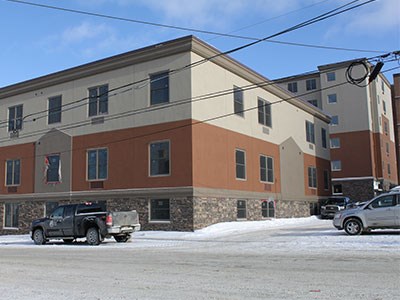When the preliminary results of a housing study for the City of Timmins were released earlier this year, Mayor Tom Laughren admits there weren’t any big revelations, but they still made him sit up and take notice.
“I don’t want to say there are any real surprises,” Laughren said, “but the first draft tells me we have a huge challenge.”
The study, conducted by Re/fact Consulting, indicates a slew of issues facing the city. There’s a need for more affordable housing, and homelessness is a problem.
The city’s vacancy rate sits at 1 per cent, and the housing that is available is older and in need of repair. Not a lot of new housing is being developed to fill the gap.
Central to the problem is the fact that the local economy still fluctuates with the price of gold, so it’s difficult to predict trends and the housing needs that come with them.
“One of the clear challenges that Timmins faces—and it’s not unlike other municipalities in the North, especially when it’s linked to a resource-based economy—is trying to manage this notion of ebbs and flows in terms of the local economy and trying to maintain a housing base that can weather some of those changes,” said Re/fact consultant Ken Foulds. “That’s a fundamental challenge right from the word go.”
The city needs to find way to balance that fluctuation in a way that’s palatable to developers, Foulds said.
“It would be inappropriate to expect a developer is going to carry a big inventory of lots if there’s not a big takeup,” Foulds said. “That means he’s putting his money in the ground and sitting there waiting for something to happen.”
It could mean adapting local building regulations to allow for different zoning, such as allowing mobile or modular building. That type of housing has made up a small component of the housing in Timmins, but it’s an example of how thinking outside traditional parameters could help grow the housing stock and combat ongoing challenges such as a short building season, high construction costs, and competition for labour.
People also have to readjust their thinking about affordable housing, said Brian Marks, director of housing services with the Cochrane District Social Services Administration Board (DSSAB). There needs to be less focus on geared-to-income rent and take into consideration the full housing spectrum.
“What we need to do is, at any level of the housing spectrum—whether it’s private rental, private homeownership, low-income rental—stimulate it so that the supply gains a little bit and demand goes down so people can start affording things,” Marks said.
If Timmins becomes unaffordable as a place to live, it will lose residents who will look elsewhere for employment and housing, he said. Instead, Timmins needs to focus on building up its amenities so that it becomes a destination of choice.
Marks is currently working on a 10-year housing plan that will work in tandem with the Timmins plan to find solutions for affordable housing. Results aren’t yet complete, but he believes the municipality will have a role to play in helping to create new housing options.
Tax incentives, waiving building or tipping fees, or using the gas tax to offset the cost of infrastructure are all potential options that don’t cost the city anything, but present long-term investment opportunities for the municipality, Marks said.
“Municipalities have the tools to be able to create the affordability,” he said.
In advance of the study’s recommendations, there have been some changes in development. The former St. Mary’s Hospital is being converted to seniors housing, while a few former hotels have converted the spaces into apartments, and another has been knocked down to make way for 30 units in a new building. Another proposal coming to council is looking at developing townhouses.
“Over and above the study that we’re doing, some of the discussion as we’ve been going through this process has resonated in the community and people have taken up that challenge,” Laughren said.
He also sees potential in re-examining development in downtown core, and returning to older sections of the community that already have infrastructure in place.
“We could envision, with people putting some money into those downtown buildings, you’d still have that traditional commercial business on the bottom floor, but there would be opportunities to rent apartments above,” Laughren said.
Living downtown would put residents close to amenities limiting the need for parking. By concentrating more residential living in the downtown core, it could also reduce urban sprawl and the need to extend sewer and water services beyond the city’s traditional boundaries, he added.
Now that the surveying has been complete, Re/fact will analyze the results and make recommendations for implementation. But Foulds notes that the study isn’t static and the goals of the housing plan will likely change with the needs of the community.
But having a plan in place is the first step in helping strengthen the housing system.
“Everybody needs a place to live,” Foulds said. “Most successful communities seem to be able to find a way to ensure that the supply that’s coming online is meeting the needs of the population even as those needs change over time.”




